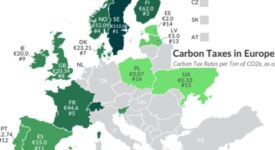European Union ministers in Luxembourg on Tuesday (13 October) reached an agreement that will establish a “traffic light” system as a guide on whether to require testing or quarantine for non-essential EU travelers, eventually restoring free movement when conditions allow. This ageement on common criteria to coordinate coronavirus travel rules will in effect provide clarity and predictability on measures that restrict movement due to the pandemic. The deal requires EU countries to provide “clear and timely information about what they must do, and which restrictions are in force,” including any accompanying requirements such as COVID-19 negative tests or passenger locator forms.
EU countries are required to publish the necessary information as early as possible, at least 24 hours before new measures come into effect. The agreement acknowledges that some flexibility is required for emergencies. Following the announcement, the European Commission said in a statement that it welcomes this agreement because it brings “more order to a currently confusing situation.” The agreement is non-binding, which means that individual EU countries are free to determine their own measures but are advised to be consistent. The 27 member states also agreed on the mutual recognition of coronavirus tests.
The ministers also created a common color-coded mapping system based on common criteria from the European Centre for Disease Control (ECDC) to define risk areas in the bloc. Member states are required to supply data to the ECDC about new cases per 100,000 people in the past 14 days, along with numbers of tests and percentage of positive tests in the past week. The agency’s role is to keep updating the color-coded map. With cases on the rise across the bloc, only a few areas would currently qualify for the lowest-risk “green” band permitting unrestricted travel. They include most of eastern Germany, Greece, some areas of Bulgaria, and parts of the Nordic and Baltic countries, and one zone in Italy.
Article Tags:
COVID-19 · ECDC · European Centre for Disease Control · European Union · Luxembourg · traffic lightArticle Categories:
INSTITUTIONS & POLICY-MAKING






